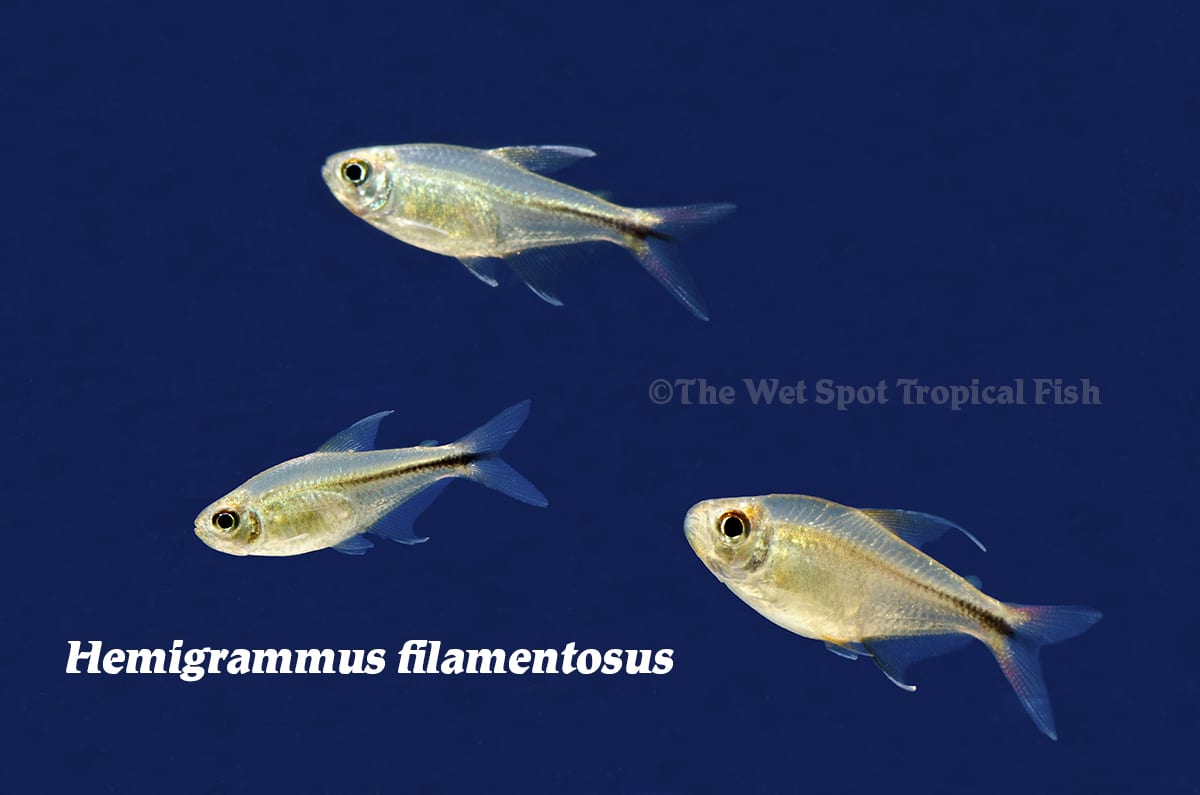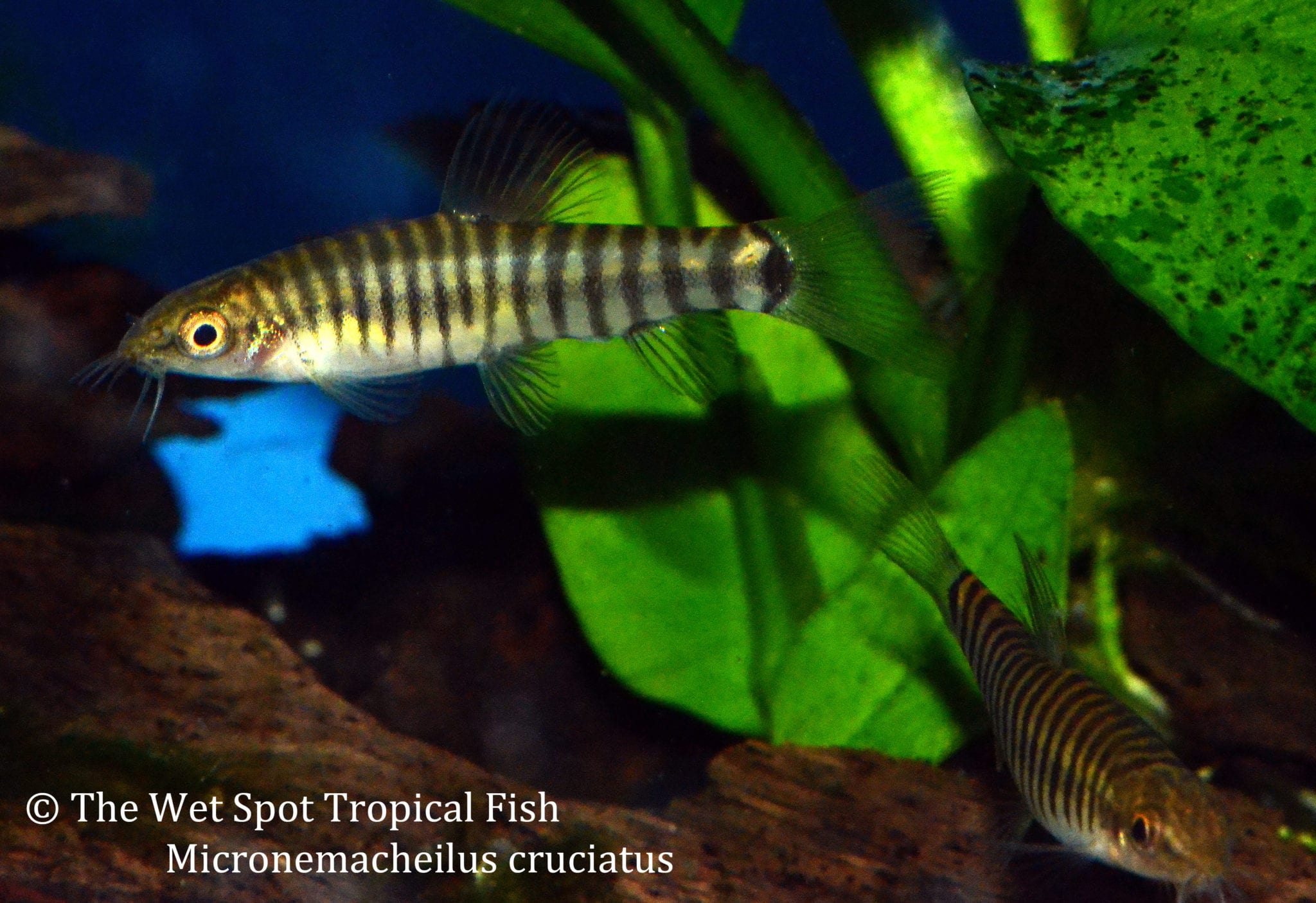The Order of the Phoenix Tetra
The Order of the Phoenix Tetra
Do you know what you were doing at midnight on July 21st, 2007? Many of us were probably doing the same thing: (im)patiently waiting in line at our local bookstore. Why? To get our hands on the epic conclusion of the tale of “The Boy Who Lived” and his adventures at Hogwarts School of Witchcraft and Wizardry! Though one may wonder how he was able to graduate, having missed so many classes! Harry Potter holds a special place in many hearts and is beloved by more than 500 million people across the globe. So, today, in honor of J.K. Rowling’s beloved brainchild, we’re going to highlight some Fantastic Beasts, indeed. Now class, take your gillyweed, and we’re off to see Barboides gracilis, Hemigrammus filamentosus, and Micronemacheilus cruciatus.
Scientific NameBarboides gracilis
Common NameDwarf Amber Barb
Temperature / pH70 to 78°F / 6.0 to 7.0 pH
Native LocationWest & Central Africa
Preferred DietSmall invertebrates
Shimmering, golden, small, and quick, B. gracilis may as well be known as the “golden snitch of the stream”. Hailing from West and Central Africa (where talented wizarding children attend Uagadou), the “Dwarf Amber Barb” has an affinity for slow-moving forest streams with marginal vegetation and lots of shade. In captivity, they do best in well-furnished tanks with dense vegetation, sandy substrate, driftwood branches and tangles, dried leaf litter, and dim lighting. Reaching about ¾ of an inch in length, they are golden in coloration with a dark blotch at the base of their caudal fin. These miniature swimmers make quite an impressive display in their shoals (whereas an equal bombardment of snitches may be the stuff of a seeker’s nightmares!), and should be kept in groups of 20 or more. Peaceful and friendly as any Hufflepuff, they can be kept in community setups with other diminutive West African species or South American characins. Feeding predominantly on small aquatic invertebrates in the wild, they should be regularly fed small live and frozen morsels supplemented by high quality dry products. Waters should be maintained with temperatures between 70 and 78°F, pH of 6.0 to 7.0, and hardness of 0 to 108 ppm.
Scientific NameHemigrammus filamentosus
Common NamePhoenix Tetra
Temperature / pH75 to 78°F / 6.0 to 7.0 pH
Native LocationBrazil
Preferred DietOmnivorous
While, unfortunately, we can’t be as cool as Dumbledore and have a mythological bird born from its own ashes as a companion, H. filamentosus may be the next best thing. Known more commonly as “Phoenix Tetras”, these characins are quite majestic in their own right (depsite the lack of healing tears!). Reaching 3.6 inches in length, they have shining silver bodies with long, filamentous, red, black, and white fins. Hailing from the Rio Araguaia basin in Brazil, they prefer slow-moving rivers and tributaries. A simple biotope setup would include sandy substrate, driftwood branches placed to form crevices and crannies, and dried leaf litter. Aquatic plants are generally absent from their natural environment, though they tend to do great in heavily planted tanks due to the cover they provide. Mostly peaceful, they are suitable for most community tanks, and should ideally be kept in shoals of 8 or more. Opportunistic omnivores feeding on small invertebrates, zooplankton, and algae, they should be fed balanced diets consisting of small live and frozen foods, and high-quality flake and pellets with some vegetal component. Tank waters should be kept with temperatures in the range of 75 to 78°F, pH between 6.0 and 7.0, and hardness between 35 and 214 ppm.
Scientific NameMicronemacheilus cruciatus
Common NamePygmy Multi Stripe Loach
Temperature / pH71 to 80°F / 6.0 to 7.0 pH
Native LocationVietnam
Preferred DietSmall invertebrates
Surely not a popular fish in the Longbottom family tank, M. cruciatus isn’t as wicked as the Unforgivable Curse by the same name. Known by a common name with a much friendlier connotation, the “Pygmy Muilti-stripe Loach”, these small loaches reach 1.5 inches in length, have long bodies with pointed mouths, and exhibit black and white striping down their sides. Endemic to coastal freshwater habitats in Vietnam, they are found in slow-moving stretches of rivers, backwaters, lakes, ponds, and swamps with patches of aquatic vegetation. In captivity, they do best in tanks with lots of floating and rooted plants, driftwood furnishings, and leaf litter. These pygmy loaches are sensitive to fluctuating water chemistry and should only be added to mature tanks with well-oxygenated, but not fast-flowing, waters. Peaceful by nature, but skittish around more boisterous bottom-dwellers, they do best in tanks with similarly-sized schooling species like danios, Boraras, or micro rasboras. When comfortable, these loaches spend a good amount of the time out in the open, and are a joy to watch! Mostly predating on small invertebrates in the wild, they should be fed regular live and frozen meals supplemented by small or crushed floating dried foods. Waters are best kept with temperatures between 71 and 80°F, pH of 6.0 to 7.0, and hardness of 36 to 215 ppm.
There are many kinds of nerds out there, and sometimes, the stars align, and people with multiple interests overlap in the Venn diagram of fanaticism. (Fun Fact: Did you know Professor Slughorn’s patronus is a fish?!) If you’re thinking of hunting down these Fantastic Beasts, you need not wonder where to find them! The Wet Spot has you covered.


